Contents Table
- 1 Top 5 Factors to Consider How to Choose the Best Pickleball Paddle
- 1.1 How to Identify Your Playing Style and Skill Level
- 1.2 Analyzing Core Thickness, Hitting Surface, and Grip Size
- 1.3 Comparing the characteristics of graphite, fiberglass, and carbon fiber paddles
- 1.4 The benefits of wooden paddles for new or casual players:
- 1.5 Examining the unique characteristics of composite paddles for versatility
- 1.6 Balance Power and Control: Weight and balance considerations
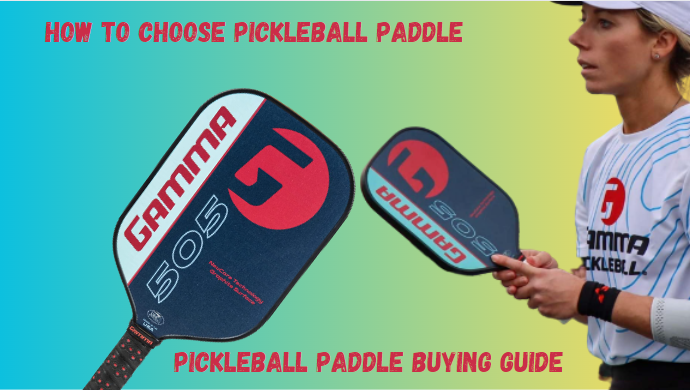
It all starts with choosing the right paddle. Your new pickleball paddle, however expensive or heavy, is more than just another piece of equipment. This is your secret weapon in court. But how do you know which pickleball paddles are best for you? We’ll explain step by step.
Sports equipment, such as your pickleball paddle, can make or break your performance. That’s why it’s so essential for players to understand the impact of paddle selection. From composite and graphite options to lightweight paddles and varying weights, there are many factors to consider when choosing a pickleball paddle to suit your style and spin.
Finding the ideal fit for sports equipment like pickleball paddles can initially seem overwhelming, but fear not! We will profoundly discuss the world of pickleball paddles. So, choose a pickleball paddle with the correct features for optimal spin and swing, and elevate your game like never before.
Let’s explore everything pickleball players need to know about finding the best Pickleball Paddle for maximum success on the court.
Top 5 Factors to Consider How to Choose the Best Pickleball Paddle
Several important factors to consider are choosing the best pickleball paddle, including a club paddle. Every aspect plays a role in determining the right paddle for you, from weight and grip size to balance and core thickness. Assessing the material of the hitting surface is critical to both stability and playability when it comes to twisting and avoiding tennis elbow.
Here are five essential points to remember when choosing your pickleball paddle;
Weight of the Paddle
The paddle’s weight can significantly affect your game. Lighter paddles offer increased maneuverability and control, while heavier paddles provide more power. Consider your playing style and personal preference when deciding on a paddle weight.
Weight Specification
- Lightweight paddle: 7 to 7.5 oz
- Midweight paddle: 7.5 to 8.2 oz
- Heavyweight paddle: 8.2 to 8.5 oz
Grip Size
Finding the right grip size ensures comfort and proper control during gameplay. A small grip can cause hand fatigue, while a huge one can affect your ability to hold the paddle safely. Always try different grip sizes to find what size is best for you.
Grip Size Specification
- Small Size Grip: 4 Inches
- Mid-Size Grip: 4 to 4.25 Inches
- Full-Size Grip: 4.25 to 4.5 Inches
Balance
Paddle balance refers to how weight is distributed throughout the paddle. There are three main types of credit; head-heavy, even-balance, and handle-heavy. Each class offers benefits, such as increased strength or improved game strategy. Determine which balance best suits your playing style.
Core Thickness
Core thickness affects both power and control. Thicker roots generally provide more power but may sacrifice some control. Thinner bodies offer better control but may have slightly less power. Consider your emphasis on ability versus control when evaluating core thickness options.
Striking surface material
The material used on the striking surface of a pickleball paddle can affect its durability and playability. Common materials include graphite, composite, fiberglass, and wood. Graphite paddles are light with a good touch, while composite paddles offer a combination of power and control. Fiberglass paddles provide excellent communication with added durability, and wooden paddles offer a classic feel. Choose content that suits your preferences and play style.
Considering these factors, you can make an informed decision when choosing a pickleball paddle for a game that best suits your needs. Remember to try and experiment with different options to find the pedal that enhances your performance on the court.
Some top-rated posts you can also visit
- Best pickleball paddles: Click here to visit
- Best pickleball paddles for intermediate players: Click here to visit
- Best pickleball paddles under $100: Click here to visit
How to Identify Your Playing Style and Skill Level
Figuring out that you are playing the perfect pickleball is very important. Different players have different play styles, and finding the right pickleball paddles that complement your style can significantly enhance your game. Understanding your skill level in pickleball is equally crucial as it affects the type of paddle face that will work best for you.
Some essential points to consider in your playing style and skill level:
Playing Style: Take some time to consider your playing style. Are you an attacking player who likes to hit powerful shots? Or are you a more controlled player focusing on finesse and ball placement? Identifying your preferred style will help narrow down the features you should look for in a paddle.
Skill Level: Whether you are new to pickleball or a seasoned player, your skill level plays a vital role in choosing the right paddle. New players may benefit from paddles with more prominent sweet spots and forgiving surfaces, while serious players may prefer advanced technology for better control and power.
Specific Characteristics: Once you understand your playing style and skill level, it’s time to identify the particular characteristics that complement them. For example:
Aggressive players can choose the best pickleball paddles with heavier weights, which provide more power behind their shots and strengthen their core. Light paddle control for players looking for the perfect pickleball paddle. These paddles offer better maneuverability, allowing players to have better control over their shots and dominate the game.
Players looking for the best pickleball paddles with textured surfaces or specific face materials can find options to enhance their basic gameplay and get extra spin. Remember, personal preference also plays a role in choosing a pickleball paddle. Try different paddles, or read reviews from other players to find the best fit for you and your basic needs.
Determining you’re playing style and skill level is the first step toward choosing the ideal pickleball paddle to enhance your game. Considering these factors and personal preferences, you’ll be well-equipped to make an informed decision that suits your unique playing style, abilities, and core.
Analyzing Core Thickness, Hitting Surface, and Grip Size
1. Core thickness
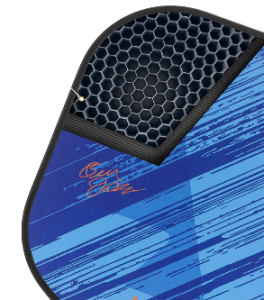
The thickness of the paddle core plays a vital role in your game during pickleball. Here’s what you need to know about paddle facials
- Power, touch, and maneuverability: A thicker core can put more power behind your shots but sacrifice touch and maneuverability. On the other hand, a thin body offers better control and finesse but may lack capacity.
- Core Materials: Peddle can have different core materials, such as an aluminum core or a graphite face with a composite body. Each material has its characteristics that affect the overall feel of the peddle.
- Thickness Options: The paddle core comes from 0.5 to 0.75 inches. Choose a thickness that suits your playing style and preferences.
2. Hitting Surface
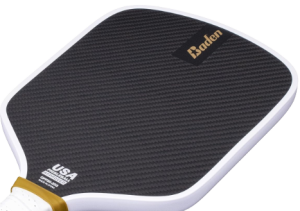
A pickleball paddle’s striking surface, also known as the core, plays a vital role in how it performs during gameplay. Consider these aspects when choosing your paddles.
- Surface Materials: Paddle surfaces can be made of graphite, composite materials, or polymers. Graphite faces offer excellent control, while composite surfaces balance control and power. Polymer surfaces provide better stability.
- Differentiation: Understanding the differences between these surface materials will help you decide based on your playing style and desired performance.
3. Grip Size
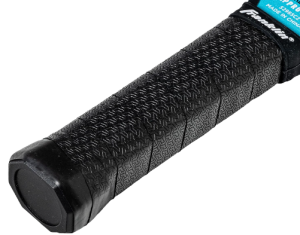
Correct grip size is essential for comfort and control when playing pickleball with paddles.
- Comfort and Control: The correct grip size ensures comfort during long matches while allowing you to maintain control over your shots.
- Hand size matters: Consider your hand size when choosing a grip size. A small hand may need a smaller grip, while a giant hand may need a larger one.
- Handle length: Grip sizes are often correlated with handle length. Long handles have a large grip, and short handles have a slight hold.
Comparing the characteristics of graphite, fiberglass, and carbon fiber paddles
Graphite pickleball paddles: See on Amazon

The graphite paddles are known for their lightweight yet robust construction. Graphite material offers excellent maneuverability and control on the court. These paddles balance strength and sophistication, making them popular with intermediate and advanced players.
Fiberglass pickleball paddles: See on Amazon
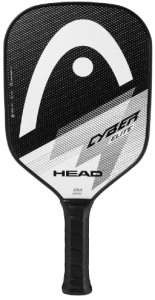
on the other hand, fiberglass paddle offer durability and versatility. The fiberglass face material provides a soft touch, making it easy to create spin on pickleball shots. These pickleball paddles are often used by players who prefer control over power.
Carbon fiber Pickleball Paddles: See on Amazon
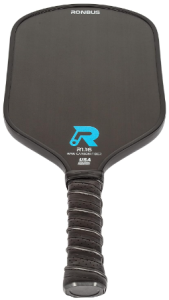
This type of paddle combines the best of both worlds – strength and responsiveness. Carbon fiber construction allows for increased stability while maintaining control. These pickleball paddles are ideal for aggressive players who want to dominate their opponents with powerful shots.
The benefits of wooden paddles for new or casual players:

Wooden pickle paddles have unique advantages, especially for beginners or recreational players. They offer a more forgiving feel than composite or graphite options. Wooden paddles have a more prominent sweet spot, which provides an extra margin for error when hitting the ball.
Wooden pickleball paddles have faces that absorb some of the ball’s energy at impact, reducing vibration for players with joint problems or discomfort.
Examining the unique characteristics of composite paddles for versatility
Composite pickleball paddles use a combination of materials, such as a polymer core and aluminum honeycomb structure. This combination creates versatile paddle options that cater to various playing styles.
The polymer core pickleball paddle is excellent at absorbing shock and reducing vibration during play. This feature enhances comfort and reduces fatigue during pickleball matches or practice sessions.
Aluminum honeycomb structures provide an exceptional strength-to-weight ratio, resulting in lightweight yet durable composite pickle paddles. These designs offer better power transfer while maintaining maneuverability in pickleball.
Balance Power and Control: Weight and balance considerations
Finding the right balance between power and control is crucial in pickleball. The weight distribution of the paddles plays a vital role in determining the effectiveness of your shots, whether you prefer powerful smashes or delicate prints.
Effect of Weight Distribution
The weight distribution of a pickle pedal can significantly affect your gameplay. The heavier head-weight paddles provide extra power behind your shots, making them ideal for players who rely on solid drives and an aggressive play style. On the other hand, paddles with weight distributed towards the handle offer better control, allowing for precise placement and delicate touch shots.
Finding Your Favorite Balance Point
Every player has their preferred playing style, so finding a pedal that matches your needs is essential. Experimenting with different paddles can help determine whether you like a head-heavy or handle-heavy design. You can optimize power and control to suit your unique playing style by finding the right balance point.
Consider lightweight options
Lightweight pedals are known for their maneuverability benefits. They allow quick reactions and movement around the court, making them perfect for players prioritizing speed and agility over raw power.
Look for a heavier paddle
Alternatively, opt for heavier paddles to provide extra stability during gameplay. These paddles create momentum behind each shot while reducing vibration at ball contact, increasing control over your stroke.
In the quest to find the perfect pickleball paddle that balances power and control, remember there is no one-size-fits-all solution. This often involves compromises between various factors, such as weight distribution, lightweight options versus heavier alternatives, and the quality of pedals.
When choosing a paddle, consider material composition (graphite or composite), body materials (wood or carbon fiber), and new technology to find the right fit for your playing style, regardless of gender or skill level. Weight and balance are crucial for optimal pickling performance.
So, take your time, try different paddle options, and find the paddle that feels like an extension of your arm on the court.
Final Words
Choosing the right racket, paddles can significantly enhance your playing experience and improve your performance on the court. You can decide by considering you’re playing style, skill level, core thickness, hitting surface, grip size, paddle material, weight, and balance to suit your needs.
It is essential to carefully analyze these aspects to balance power and control while playing pickleball. The weight and credit of the paddles play a crucial role in determining your comfort and maneuverability during gameplay.
To choose the best pickling paddles, try different options to test how they feel and perform. Consider your preferences and needs with an open mind to explore new possibilities with varying paddles for pickling.
Finally, choosing a pickleball paddle requires careful consideration of various factors. By understanding you’re playing style and analyzing the characteristics of the paddles, you can select the paddles that will improve your game. Exploring different materials and finding the right balance between power and control is critical to choosing the best pedals for your needs.
So, take this new knowledge to find the best pickleball paddles. Step out into the court and let your skills shine with confidence!